A "Most Awful and Most Lamentable Catastrophe": The Explosion on the USS Princeton
“Never in the mysterious ordinance of God has a day on earth been marked in its progress by such startling and astounding contrasts — opening and advancing with hilarity and joy, mutual congratulation and patriotic pride, and closing in scenes of death, and disaster, of lamentation and unutterable woe.”[1] –Virginia Congressman W.C. Rives
February 28, 1844 was a cold, clear day in Washington and it marked a momentous occasion. The USS Princeton, a newly designed vessel for the U.S. Navy, was to be inaugurated with an excursion from Alexandria, Virginia to Mount Vernon. Hundreds of Washington’s best society boarded the ship that day, including President John Tyler, several cabinet secretaries, and former first lady Dolley Madison, the scion of Washington society.[2]
At the time, John Tyler had a lot on his mind, both political and romantic. Tyler became President in 1841 following the death of President William Henry Harrison after 31 days in office. His chief political goal was the annexation of Texas: a firm believer in Manifest Destiny, Tyler sought to facilitate American expansion from sea to sea. His Secretary of State, Abel Upshur, hoped that the annexation of Texas would perpetuate American slavery by offering more land for the cultivation of crops. In the winter of 1844, Upshur and Tyler were preparing a treaty that would join the Republic of Texas with the United States.[3]
On this balmy winter day, Tyler was also occupied by thoughts more personal than political. Tyler’s wife of 29 years, Letitia Christian Tyler, died in 1842 at the White House, leaving him a widower deep in mourning. Five months after his wife’s death, Tyler met Julia Gardiner, a beautiful young woman from a wealthy Long Island family whom Tyler’s son had invited to visit the White House. After some months of letters and meetings between the young woman and the much older president, Tyler proposed marriage to Julia, who refused him. Yet Tyler continued his pursuit, writing her poems and continuing to entertain her and the family at the White House. Julia Gardiner was among the festive crowd aboard the Princeton, as was her father David.[4]
In the midst of all this, the wealthy and well-connected Robert Stockton had convinced Tyler into letting him construct a new model vessel for the U.S. Navy. The USS Princeton was a marvel of modern engineering and had been produced by means of a partnership between Stockton and John Ericsson. Ericsson had been born and educated in Sweden, then moved to England, where he had invented the screw propeller. This innovation was crucial for nineteenth-century naval warfare, as a screw propeller located beneath the surface meant that the ship’s machinery would be out of reach of cannon fire.[5] Ericsson would later design the U.S. Navy's first ironclad vessel, the USS Monitor.[6]
George Sykes, congressman from Pennsylvania, described the festive mood on the day of this excursion down the Potomac.
“As the president and members of the Cabinet passed over the side of the ship on a plank from the hurricane deck of the steamboat-the sailors and Marines in the shrouds- pulled off their hats and gave three cheers while the Marine band a full band of excellent musicians struck up 'The Star-Spangled banner' with a very happy effect. The day was mild and serene without a cloud-the company were all dressed in their very best and everyone seemed pleased and happy. As soon as the company had all got on board the steamboat pushed off and left for Alexandria at which place a vast assemblage of persons were collected on the wharf and gave three cheers for the Princeton."[7]
Most of the Washingtonians aboard the Princeton were not particularly interested in the new screw propeller system, invisible below the waterline. They were amazed and enthralled by the ship’s two enormous cannon, 12-inch guns that could send a 200-pound ball over a distance of five miles. One gun was named the Oregon, and the other, surely with a touch of irony, was called the Peacemaker.[8]
As the ship traveled down the icy Potomac, the Peacemaker was fired twice, displaying to the delighted crowd the range of this powerful armament over the icey Potomac River. Following these two shots, most of the crowd went below decks for a fine reception of food and wine, specially arranged for them by Captain Stockton. As the ship approached Mount Vernon, however, the guests began to demand that the Peacemaker fire once more, an honorary shot to commemorate the first American president. Stockton agreed, and several men and some women went above decks to view the cannon as it would fire once more.
Julia Gardiner’s father David went above decks, as did Abel Upshur and the Secretaries of War and the Navy. Julia Gardiner stayed below deck, as did John Tyler, whether to seek her company or to propose another toast to the gathered crowd. The group on deck anticipated the firing of the Peacemaker, and Captain Stockton gave the order for the cannon to fire.
When the gun was fired for this third time, tragedy struck. The cannon’s breech exploded, and deadly shards of hot iron were blown across the deck and into the crowd of bystanders. The gun, unable to withstand the force of repeated firing, had ruptured, turning a scene of celebration into a site of tragedy.[9]
The National Intelligencer described the scene as chaos broke out upon the Princeton.
“The scene upon the deck may more easily be imagined than described, nor can the imagination picture to itself the half of its horrors. Wives, widowed in an instant by the murderous blast. Daughters smitten with the heart-rending sight of their father’s lifeless corpse! The wailings of agonized females! The piteous grief of the unhurt but heart-stricken spectators! The wounded seamen borne down below! The silent tears and quivering lips of their brave and honest comrades, who tried in vain to subdue or to conceal their feelings! What words can adequately depict a scene like this?”[10]
Six people were killed in the explosion of the Peacemaker, including Upshur, Secretary of the Navy Thomas Walker Gilmer, Beverly Kennon, Virgil Maxcy, and David Gardiner, and Armistead, the black enslaved valet to President Tyler.[11]
Tyler and much of Washington’s elite had only narrowly escaped death or serious injury, and two crucial Cabinet members lay dead.
The headlines in the newspapers on the following day spoke to the terrible shock of this sudden tragedy, as Washington and the nation absorbed the shock of the gruesome events. “Horrible Accident! Great Gloom in Washington!” blared the New York Herald. The National Intelligencer wrote of a “Most Awful and Most Lamentable Catastrophe!” and a “Narrow Escape of the President!” The Madisonian, another Washington journal, proclaimed “Melancholy Catastrophe!”[12]
The coffins of four of the victims were laid in state in the East Room of the White House, and crowds of people filed through the executive mansion to mourn the unfortunate victims. Following this period of mourning, the bodies of the four men were brought to Congressional Cemetery in a large and elaborate funeral procession.[13]
Upshur’s death signaled the short-term failure of the plans to annex Texas, as debate over the Tyler-Texas Treaty stalled in the Senate as the 1844 Presidential campaign proceeded. Tyler ceded the Presidency to the pro-annexation James K. Polk, who would complete the task of bringing this new state into the Union.[14]
Also blown to smithereens were Stockton’s self-aggrandizing hopes for a new and modern American navy. This murderous explosion on the newest American naval ship was a tragedy and an embarrassment that dampened immediate hopes of a modernized U.S. fleet. Luckily for Stockton, John Tyler absolved the captain of all responsibility for the incident, writing to Congress that the disaster “must be set down as one of the casualties which, to a greater or lesser degree, attend upon every service, and which are invariably incident to the temporal affairs of mankind.”[15]
For John Tyler and Julia Gardiner, the explosion on the USS Princeton brought about the happy conclusion of his romantic pursuit. The tragic death of her father severely traumatized the young woman, who desperately missed her father and sought comfort in Tyler’s affections. In the months following her father’s death, Julia Gardiner consented to the President’s standing proposal, and the two were married that June. Despite the large difference in their ages, (a gap of about thirty years between them) the marriage was said to be a happy one and produced seven children.[16]
Footnotes
- ^ https://www.washingtonpost.com/local/from-peacemaker-to-widowmaker-remembering-the-uss-princeton-disaster/2014/10/25/2587af18-592e-11e4-bd61-346aee66ba29_story.html?utm_term=.a5250fb5b11a
- ^ https://wamu.org/story/14/06/06/how_an_explosion_on_the_potomac_170_years_ago_arguably_begot_the_civil_war/
- ^ https://slavery.princeton.edu/stories/abel-upshur
- ^ Explosion on the Potomac: The 1844 Calamity Aboard the USS Princeton by Kerry Walters
- ^ The "Princeton" and the "Peacemaker": A Study in Nineteenth-Century Naval Research and Development
- ^ https://monitor.noaa.gov/150th/ericsson.html
- ^ https://journals.psu.edu/phj/article/viewFile/21070/20839
- ^ https://wamu.org/story/14/06/06/how_an_explosion_on_the_potomac_170_years_ago_arguably_begot_the_civil_war/
- ^ https://www.washingtonpost.com/local/from-peacemaker-to-widowmaker-remembering-the-uss-princeton-disaster/2014/10/25/2587af18-592e-11e4-bd61-346aee66ba29_story.html?utm_term=.a5250fb5b11a
- ^ https://www.washingtonpost.com/local/from-peacemaker-to-widowmaker-remembering-the-uss-princeton-disaster/2014/10/25/2587af18-592e-11e4-bd61-346aee66ba29_story.html?utm_term=.a5250fb5b11a
- ^ The "Princeton" and the "Peacemaker": A Study in Nineteenth-Century Naval Research and Development
- ^ https://books.google.com/books?id=xTyACQAAQBAJ&pg=PT7&lpg=PT7&dq=“Horrible+Accident!+Great+Gloom+in+Washington!”&source=bl&ots=UKJgxcRQj1&sig=HQIetwkJuC1d3Yxjl68KLLeBzpg&hl=en&sa=X&ved=0ahUKEwi_9bHNptDaAhXSpFkKHVz_BhwQ6AEIKTAA#v=onepage&q=“Horrible%20Accident!%20Great%20Gloom%20in%20Washington!”&f=false
- ^ https://journals.psu.edu/phj/article/viewFile/21070/20839
- ^ https://slavery.princeton.edu/stories/abel-upshur#ref-12
- ^ https://www.washingtonpost.com/local/from-peacemaker-to-widowmaker-remembering-the-uss-princeton-disaster/2014/10/25/2587af18-592e-11e4-bd61-346aee66ba29_story.html?utm_term=.a5250fb5b11a
- ^ Explosion on the Potomac: The 1844 Calamity Aboard the USS Princeton by Kerry Walters


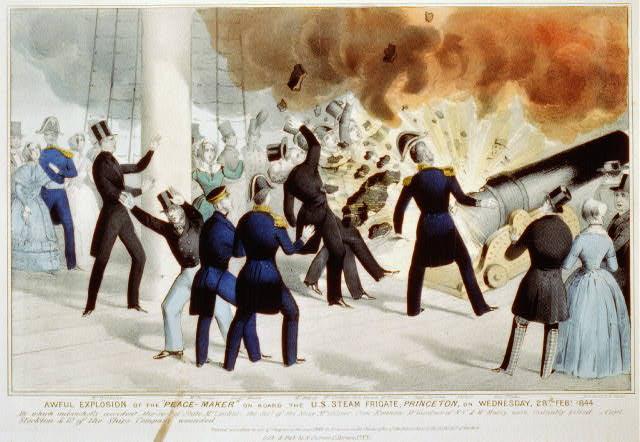

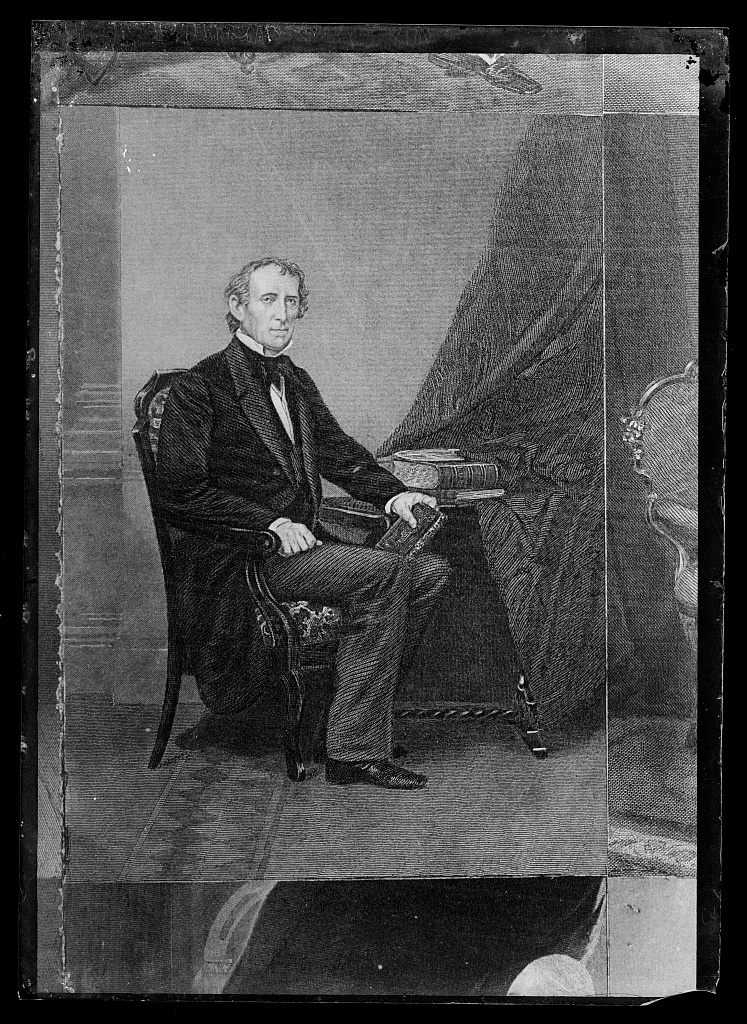
![Julia Gardiner Tyler [Julia Gardiner Tyler, wife of Pres. John Tyler, three-quarter length portrait, seated, facing slightly right]](/sites/default/files/styles/embed/public/03116v.jpg?itok=x43_MnRg)
![Julia Gardiner Tyler [Julia Gardiner Tyler, wife of Pres. John Tyler, three-quarter length portrait, seated, facing slightly right]](/sites/default/files/03116v.jpg)
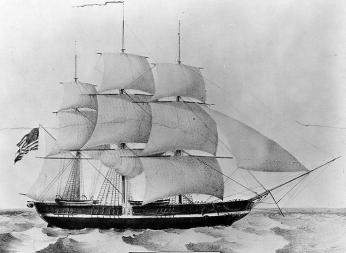
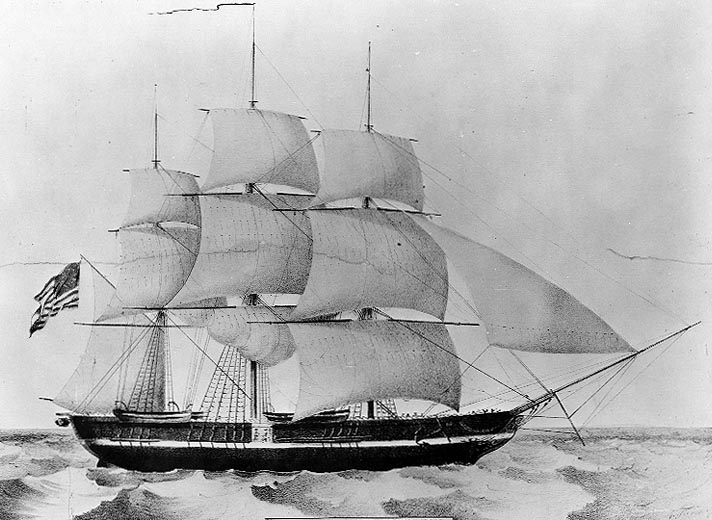
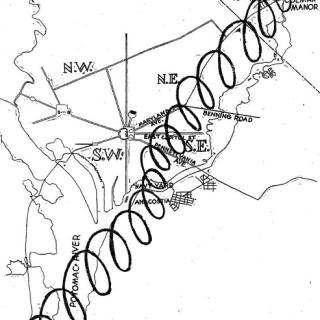
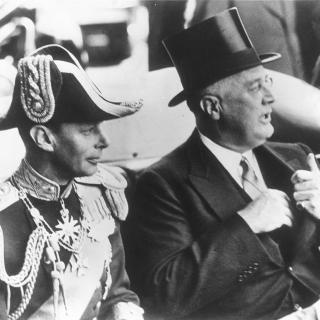
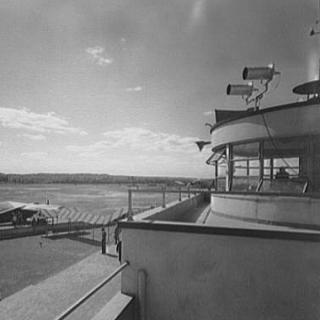
![Sketch of the mythical fuan by Pearson Scott Foresman. [Source: Wikipedia]](/sites/default/files/styles/crop_320x320/public/2023-10/Goatman_Wikipedia_Faun_2_%28PSF%29.png?h=64a074ff&itok=C9Qh-PE1)












